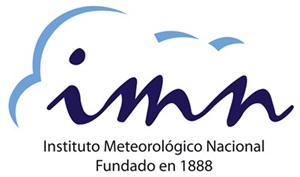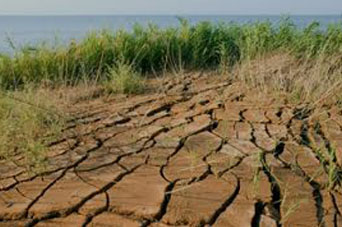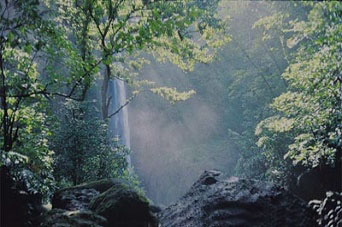ENSO
The El Niño-Southern Oscillation (ENSO) or Canonical ENSO is a naturally occurring phenomenon that involves fluctuating ocean temperatures in the equatorial Pacific. The fenom "El Niño" refers to the large-scale ocean-atmosphere climate phenomenon linked to a periodic warming in sea-surface temperaturas (SST) across the central and east-central equatorial Pacific (between approximately the date line and 120°W).
On an interannual scale, from 2 to 7 years, the El Niño-Southern Oscillation (ENSO) cycle is the dominant mode of variability in the Pacific Ocean. The pattern generally fluctuates between two modes: warmer than normal in the equatorial waters of the central and eastern Pacific Ocean known as El Niño and colder sea surface temperatures than normal in the central and eastern equatorial Pacific Ocean called La Niña.The phenomenon causes variations in rain patterns, surface temperatures and winds. These changes alter large-scale air movements in the tropics, triggering global side effects.
El Niño represents the warm phase of the El Niño-Southern Oscillation (ENSO) cycle, and is sometimes referred to as a Pacific warm episode. El Niño originally referred to an annual warming of sea-surface temperatures along the west coast of tropical South America.
The upwelling of cold water from the deep ocean also has important consequences in the atmosphere. In this area, the air that is in contact with the ocean cools and prevents convection; that is, the rain. As a result, the coast of Peru has an almost desert climate: the average annual precipitation in Lima is only 8 mm, unlike the driest sectors of Costa Rica that can be up to 1200 mm in a year; these conditions are reversed during an El Niño phenomenon, collecting in the desert areas of Peru up to 700 mm in one month, that is, 26,000% more rain.
When the Intertropical Convergence Zone is located in the South of Central America, and over South America, under the ENSO warm phase alters rainfall in a large part of Central America, decreasing in the Pacific regions, on the other hand in the Caribbean heaviest rains occur that the climatological average.
Related documents
ENSO: WHAT IS IT? ENSO COMPONENTS ENSO SCENARIOS ENSO PERIODICITY EL NIÑO: THE WARM PHASE OF ENSO LA NIÑA: THE COLD PHASE OF ENSO SOUTHERN OSCILLATION INDEX ENSO AND ITS EFECTS ON COSTA RICA REFERENCES
Related sites
https://www.climate.gov/enso http://www.cpc.ncep.noaa.gov/products/precip/CWlink/MJO/enso.shtml https://www.pmel.noaa.gov/gtmba/#part5a http://www.bom.gov.au/climate/enso/ https://iri.columbia.edu/our-expertise/climate/enso/ http://www.ciifen.org/ http://www.imarpe.pe/imarpe/index.php?id_seccion=I0178010000000000000000



